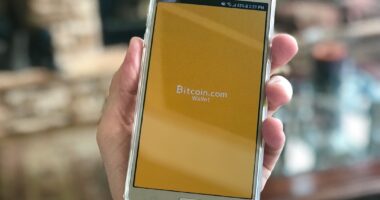NFTs, or non-fungible tokens, are unique digital assets that have gained significant attention in recent years. Unlike fungible cryptocurrencies such as Bitcoin or Ethereum, NFTs cannot be replicated or exchanged on a one-to-one basis. This uniqueness is the source of their value and has attracted interest from various sectors, including art, collectibles, and investment.
NFTs represent ownership of digital content, including artwork, music, videos, and virtual real estate. This technology enables creators to monetize their digital works and allows collectors to own and trade unique digital assets. The gaming industry has also begun to explore NFTs, with the potential for players to own and trade in-game items and characters as tokenized assets.
As the technology and infrastructure for NFTs continue to evolve, new and innovative applications are emerging. The potential use cases for NFTs are expanding, with implications for various industries and digital interactions. However, it is important to note that the NFT market is still developing, and its long-term impact and sustainability remain to be seen.
Key Takeaways
- NFTs are unique digital assets that can represent ownership of digital or physical items, and have the potential to revolutionize the art and collectibles market.
- When choosing a platform for creating and selling NFTs, consider factors such as fees, user interface, and community support.
- Creating digital artwork or collectibles for NFTs involves using digital tools and platforms to produce unique and high-quality pieces.
- Minting and tokenizing your NFTs involves uploading your digital artwork to an NFT platform and creating a unique token that represents ownership of the piece.
- Setting up a digital wallet and connecting it to the NFT platform is essential for securely storing and managing your NFTs and transactions.
- Marketing and promoting your NFTs to potential buyers involves leveraging social media, online marketplaces, and NFT communities to reach a wider audience.
- Managing and maintaining your NFT collection requires keeping track of ownership, ensuring authenticity, and staying engaged with the NFT community.
Choosing the right platform for creating and selling NFTs
When it comes to creating and selling NFTs, choosing the right platform is crucial to the success of your venture. There are several popular NFT marketplaces and platforms available, each with its own set of features, fees, and audience. Some of the most well-known NFT platforms include OpenSea, Rarible, Foundation, and Mintable, among others.
It’s important to research and compare these platforms to find the one that best suits your needs as an artist or creator. Consider factors such as the platform’s user interface, fees, community engagement, and the types of digital assets that are popular on the platform. Some platforms may cater more towards visual artists, while others may be better suited for musicians or game developers.
Additionally, consider the platform’s reputation and security measures to ensure that your NFTs and personal information are safe from potential threats. By carefully evaluating your options and choosing the right platform for your NFTs, you can maximize your chances of success in the competitive NFT market.
Creating digital artwork or collectibles for NFTs

Creating digital artwork or collectibles for NFTs requires a combination of creativity, technical skill, and an understanding of the NFT market. Whether you’re a visual artist, musician, game developer, or any other type of digital creator, there are several key considerations to keep in mind when creating NFTs. First and foremost, focus on creating high-quality and unique digital content that will stand out in a crowded marketplace.
This could be anything from digital paintings and illustrations to music tracks, 3D models, or even virtual real estate in a metaverse. It’s also important to consider the concept of scarcity when creating NFTs. By limiting the number of editions or copies of your digital asset, you can increase its perceived value and desirability among collectors.
Additionally, consider adding extra value to your NFTs through special features or bonuses for the buyer, such as exclusive access to behind-the-scenes content or future updates. By creating compelling and valuable digital artwork or collectibles for NFTs, you can attract more interest from potential buyers and increase the likelihood of a successful sale.
Minting and tokenizing your NFTs
Once you have created your digital artwork or collectibles for NFTs, the next step is to mint and tokenize them on the chosen NFT platform. Minting an NFT involves creating a unique token on a blockchain network that represents ownership of your digital asset. This process typically involves uploading your digital file, adding metadata such as title, description, and edition number, and paying a minting fee to finalize the creation of your NFT.
Tokenizing your NFT ensures that it is securely stored and verified on the blockchain, providing proof of ownership and authenticity to potential buyers. When minting and tokenizing your NFTs, it’s important to carefully follow the guidelines and requirements of the chosen platform to ensure a smooth and successful process. Pay attention to details such as file formats, size limitations, and metadata requirements to avoid any potential issues with your NFT creation.
Additionally, consider setting a fair price for your NFT based on factors such as its uniqueness, quality, and market demand. By minting and tokenizing your NFTs effectively, you can prepare them for sale on the platform and attract potential buyers.
Setting up a digital wallet and connecting it to the NFT platform
In order to buy, sell, or trade NFTs, it’s essential to set up a digital wallet that is compatible with the chosen NFT platform. A digital wallet is a secure software application that allows users to store, manage, and transfer their digital assets, including cryptocurrencies and NFTs. When choosing a digital wallet for NFTs, consider factors such as security features, user interface, supported blockchain networks, and compatibility with the chosen NFT platform.
Once you have set up your digital wallet, you will need to connect it to the NFT platform in order to buy or sell NFTs. This typically involves linking your wallet address to your account on the platform and authorizing transactions using your wallet’s private keys. It’s important to follow the platform’s instructions carefully when connecting your digital wallet to ensure that your NFT transactions are secure and seamless.
By setting up a digital wallet and connecting it to the NFT platform, you can participate in the vibrant marketplace of digital assets with confidence and ease.
Marketing and promoting your NFTs to potential buyers

In a crowded marketplace of digital assets, effective marketing and promotion are essential for attracting potential buyers to your NFTs. Consider leveraging social media platforms, online communities, and digital art marketplaces to showcase your NFTs and reach a wider audience. Engage with your followers by sharing behind-the-scenes content, artist insights, and updates about your NFT releases to build anticipation and interest in your work.
Collaborating with other artists or creators can also help expand your reach and introduce your NFTs to new audiences. Consider partnering with influencers or participating in virtual events and exhibitions to showcase your NFT collection and connect with potential buyers. Additionally, consider offering incentives such as limited-time discounts or exclusive bonuses to early buyers to encourage sales and create a sense of urgency around your NFT releases.
Managing and maintaining your NFT collection
Once you have successfully sold your NFTs and built a collection of digital assets, it’s important to manage and maintain them effectively to ensure their long-term value and appeal. Consider providing ongoing support and communication with buyers to address any questions or concerns they may have about their purchased NFTs. This can help build trust and loyalty among your collectors and encourage repeat purchases in the future.
Regularly update your collection with new releases or special editions to keep it fresh and engaging for potential buyers. Consider offering exclusive perks or benefits to existing collectors as a token of appreciation for their support, such as early access to new releases or special events. By actively managing and maintaining your NFT collection, you can cultivate a loyal community of collectors and enthusiasts who are eager to engage with your work and support your future endeavors in the exciting world of non-fungible tokens.
In conclusion, understanding the potential of NFTs as unique digital assets is crucial for creators looking to enter this burgeoning market. Choosing the right platform for creating and selling NFTs is essential for maximizing exposure and reaching potential buyers. Creating high-quality digital artwork or collectibles for NFTs requires careful consideration of scarcity and added value for potential buyers.
Minting and tokenizing NFTs effectively ensures their authenticity on the blockchain network. Setting up a secure digital wallet connected to the chosen NFT platform is crucial for participating in the marketplace of digital assets with confidence. Marketing and promoting NFTs effectively is essential for attracting potential buyers in a crowded marketplace.
Managing and maintaining an NFT collection is crucial for ensuring its long-term value and appeal among collectors.
If you’re interested in learning how to create and launch your own NFT, you might find the article “Create NFT: Steps to Launch Your Own Digital Collectible” extremely helpful. For further reading and to deepen your understanding of the NFT space, consider exploring NFT Jobs, a resource that provides insights and opportunities within the NFT industry. This site can be a valuable tool for anyone looking to get involved in NFTs, whether you’re a creator, collector, or simply curious about the digital asset market.
FAQs
What is an NFT?
An NFT, or non-fungible token, is a digital asset that represents ownership or proof of authenticity of a unique item or piece of content, such as artwork, music, videos, or other digital collectibles.
How do I create an NFT?
To create an NFT, you will need to choose a blockchain platform that supports NFTs, such as Ethereum or Binance Smart Chain. Then, you will need to create a digital wallet, mint your digital asset as an NFT, and list it for sale on a marketplace.
What can be turned into an NFT?
Almost any digital content can be turned into an NFT, including artwork, music, videos, virtual real estate, virtual goods in video games, and more. The key is that the content is unique and can be tokenized.
What are the steps to launch my own NFT?
The steps to launch your own NFT include creating or obtaining a digital asset, choosing a blockchain platform, creating a digital wallet, minting your digital asset as an NFT, and listing it for sale on a marketplace.
What are some popular NFT marketplaces?
Some popular NFT marketplaces include OpenSea, Rarible, Foundation, and NBA Top Shot. These platforms allow creators to list and sell their NFTs to a global audience.





